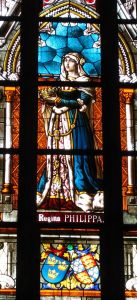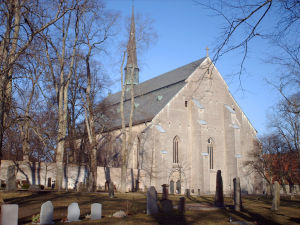The Calendar of Signet Letters of Henry IV and Henry V contains the following entry:
8 July 1406. Hertford Castle. To the Council. Richard of York has been appointed to accompany Philippa, queen of Denmark, the king’s daughter. The council is ordered to discuss with Richard how much money he will need for the journey, and inform the king at once so that he can grant it to him.
The Richard mentioned is Richard III’s paternal grandfather (often called Richard of Conisbrough)who did accompany Philippa to Scandinavia. Henry IV, having arranged the marriage of his daughter and the foreign king, knighted Richard, possibly in preparation for the trip. Philippa, endowed with a wonderful trousseau, married Erik VII, king of Norway, Sweden and Denmark. She was a strong ruler, often acting as regent for her husband, both in Sweden, where she mainly stayed, and in Denmark.
She is probably best known for organizing a defense of Copenhagen against the Hanseatic League. For this act, she was later immortalized in Hans Christian Andersen’s story, Godfather’s Picture Book:
“But there was one left behind in Copenhagen, a kingly heart and a kingly mind. Do you see this picture here, this young woman, so fine and tender, with sea-blue eyes and yellow hair? It is the Queen of Denmark, Philippa, the English princess. She stayed in the distracted city, where the townspeople swarmed in panic in the narrow lanes and streets with steep stairs, sheds, and shops of lath and plaster. With the courage of a man, she summoned townspeople and peasants, to inspire and encourage them. They fitted out the ships and garrisoned the blockhouses; they fired with their carbines; there were fire and smoke and lightness of spirit – our Lord will never forsake Denmark! The sun shone into all hearts, and in all eyes was the bright gladness of victory. Blessed be Philippa! Blessed she was in hut and in house; and blessed she was in the King’s castle, where she nursed the wounded and the sick. I have clipped a wreath and laid it around this picture,” said Godfather. “Blessed be Queen Philippa!”
After her death in 1430, she was buried in the monastery church at Vadstena.

